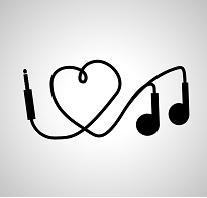In part 1 we discussed that music not only makes classes more enjoyable, it also helps to increase effort and power production. In part 2 we are going to take a look at why music is important in indoor cycling so that we will be able to use it more effectively in our classes.
One of the most highly regarded researchers in this area is Dr. Costas Karageorghis, PhD, of London’s Brunel University School of Sport and Education. He has been publishing research on the relationship between exercise and music for almost 20 years.
Dr. Karageorghis says that “Music is like is a legal drug for athletes. It can reduce the perception of effort significantly and increase endurance by as much as 15 percent.” Fifteen percent! Let’s see how this happens.
How Music Works
According to Dr. Karageorghis, there are five key ways in which music can influence our performance. They are:
∙ Dissociation
∙ Arousal regulation
∙ Synchronization
∙ Acquisition of motor skills
∙ Attainment of flow
This list felt familiar to me based on my days as a long-distance bicycle racer. During long training rides and races I would initially turn my focus to conscious thoughts that would help my performance (arousal, synchronization, motor skills, and flow). As those became tiresome, and as I became more fatigued, I would go into periods where I would deliberately let my mind wander or even go blank (dissociation).
I have used my long-distance racing experience as a guide to my indoor cycling instruction by teaching a mental process for medium to long time trial efforts. In this coaching I suggest a thought process that alternates back and forth between mechanical and motivational. “Think about your pedal stroke for one minute.” Then, “Think about what it will feel like to succeed for one minute.” You simply continue back and forth through these or similar thoughts.
Looking at this research, I was excited that there might actually be a scientific basis for what I was doing based on my experience and intuition. If we can understand how music affects our students, and why, won’t that make us better able to use music effectively?
2018-11-07


Hi, I have listened to your presentation on RPE, Very Good. Now, how can I obtain the RPE chart, poster size? Yours, with the 10 different bold colors, poster size (24″ X 36″) hanging on our studio would be legible to the class.
Great informative article, Bill. I’ve always known these things, just didn’t know how to scientifically explain them. I try to use things that motivate me when I ride outside, especially long ones. I may talk to myself when I’m alone. 🙂 It’s great when the tempo of the music is right, the lyrics are right, and the style is right. Of course, ICA is a super resource for all of the above, but when you can’t have everything, what do you feel is the most important? As much as I love being on the beat, having taught step for many years, I feel like I can give on that one, now that we have so many bikes with RPM display. Sometimes, especially if I sub at a facility without display, I’ll use one of my old step playlists, where the beat is consistent, say 128 BPM (64 rpm) then I can work at the beat or above it. Your thoughts?? Thanks so much for your research on this topic.
Great question, Mary. You made me think. I think the “feel” of the music is most important – more important than having the exact beat. Having said that, I have no problem riding to the exact beat. When I think of the “feel” of the music that includes the style. I simply listen to the music, perhaps close my eyes, and try to imagine it guiding what I want from that part of the class.
This next point is slightly different but I think it is important that the music motivate you as the instructor. If you love it, you can transfer it to your class. But, big exception, that does not mean you can use the same music all the time or music that your class hates. It just helps when you love it.
The science is important and interesting but, like art, there is no cut and paste method. The “art” of indoor cycling requires the right feel as well as the right science. You own intuition is the best determiner of that.
Good question. I’d be happy to continue the conversation. Good wishes.